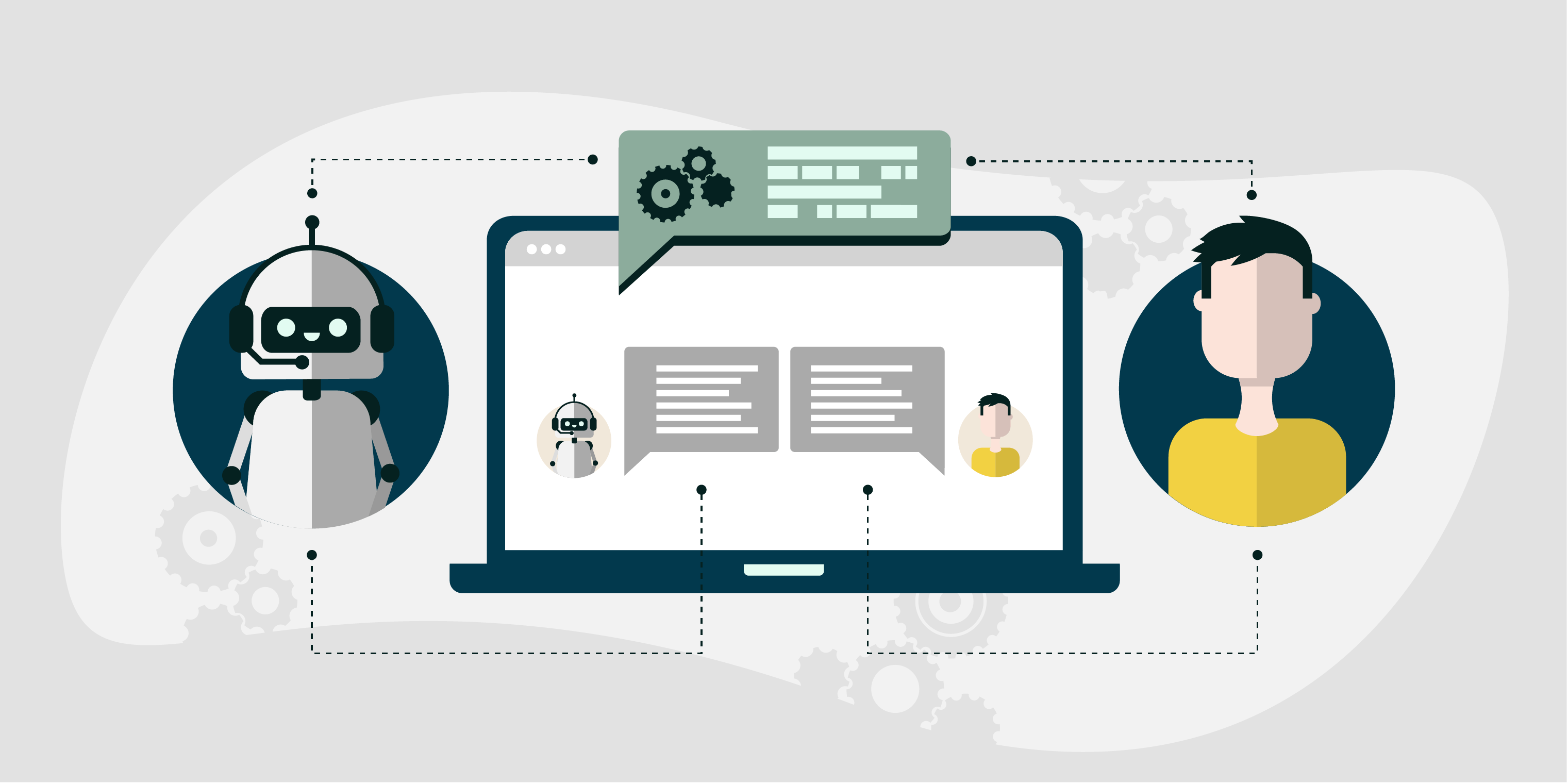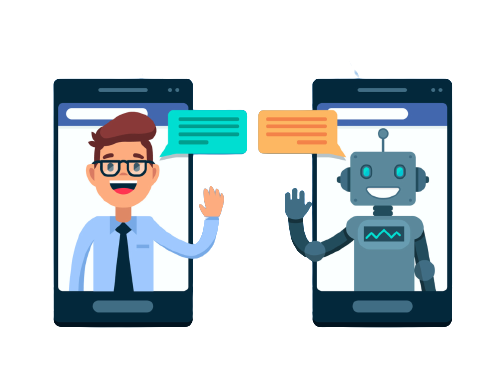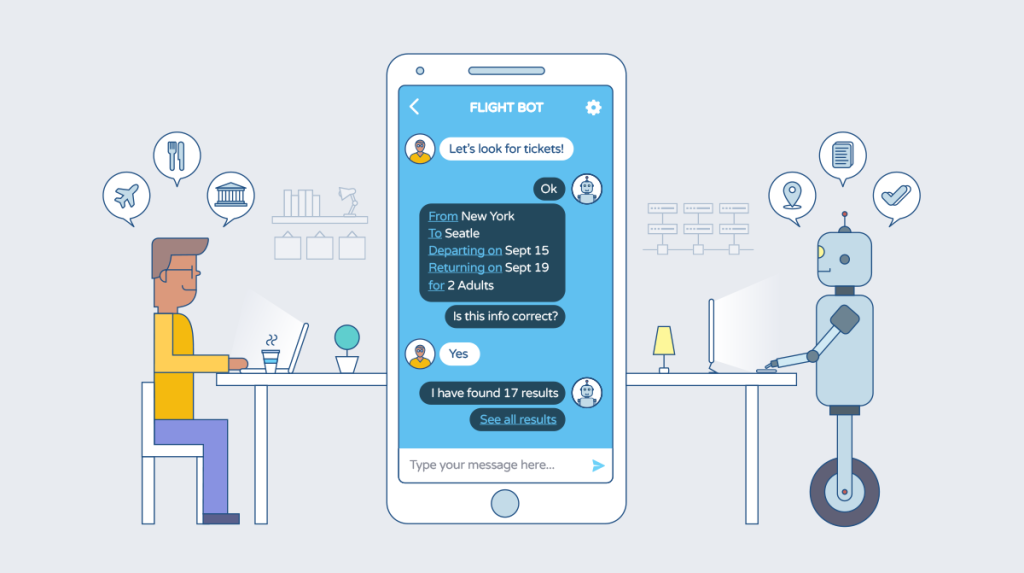
How Digital Marketing Drives B2B Leads in Surprising Ways
September 19, 2025
Why It’s Time for Every Business to Leverage Artificial Intelligence
September 19, 2025A. Unveiling the Power of NLP and Chatbots
Natural Language Processing (NLP) and Chatbots have become the dynamic duo in the realm of AI marketing, revolutionizing the way businesses interact with their customers. NLP, the technology behind understanding and interpreting human language, and Chatbots, the AI-driven conversational agents, are not just buzzwords but essential tools reshaping the marketing landscape. In this section, we will uncover the immense power that lies within these technologies and how they are redefining customer interactions.
NLP empowers machines to comprehend, interpret, and generate human-like text, bridging the communication gap between man and machine. It allows businesses to extract valuable insights from unstructured data, enabling personalized marketing strategies. On the other hand, Chatbots bring a human touch to interactions, providing instant responses and tailored experiences. Together, they create a synergy that goes beyond automating responses; they elevate customer engagement to new heights.
B. The Evolution of Customer Interaction in Marketing
The evolution of customer interaction in marketing has been a fascinating journey. From traditional methods to the digital age, businesses have always sought ways to connect with their audience more effectively. NLP and Chatbots mark the latest chapter in this evolution, offering a level of personalization and responsiveness that was once unimaginable.
We’ve transitioned from one-way communication to interactive engagement, and NLP and Chatbots are the catalysts behind this shift. Customers now expect more than just information; they desire an experience. This section will explore how this evolution has shaped the expectations of consumers and how businesses are adapting to this new era of customer-centric marketing.
C. Why NLP and Chatbots Matter in AI Marketing
In the vast landscape of AI marketing, NLP and Chatbots stand out for a multitude of reasons. Their ability to understand, interpret, and respond to human language in real-time not only streamlines processes but also enhances the overall customer experience. This subsection will delve into the significance of incorporating NLP and Chatbots into marketing strategies, emphasizing their role in boosting efficiency, personalization, and customer satisfaction.
The deployment of NLP and Chatbots is not just a trend; it’s a strategic move towards a more intelligent and customer-focused approach. As we navigate through this blog post, we’ll uncover the intricacies of how these technologies are not just tools but essential components in the arsenal of a modern marketer.

Understanding Natural Language Processing (NLP)
A. Demystifying NLP: A Layman’s Guide
Natural Language Processing, though a sophisticated field, can be demystified for the layperson. At its core, NLP enables computers to understand and respond to human language in a way that feels natural. This section will break down the complexities of NLP, making it accessible to readers with varying levels of technical knowledge.
NLP involves a series of tasks, from tokenization and part-of-speech tagging to syntactic and semantic analysis. Each step contributes to the machine’s ability to comprehend the nuances of language, making it a valuable tool for marketers seeking deeper insights into customer sentiments and preferences.
B. NLP Applications in Marketing Strategies
1. Sentiment Analysis: Decoding Customer Emotions
Sentiment analysis, a crucial aspect of NLP, empowers businesses to gauge the emotions behind customer interactions. By analyzing social media posts, reviews, and other textual data, marketers can understand the sentiment associated with their brand. This emotional intelligence allows for targeted strategies that resonate with the audience on a deeper level.
2. Content Optimization: Crafting Messages that Resonate
Content is king, and NLP plays a royal role in optimizing it. From SEO-friendly copy to emotionally resonant messaging, NLP ensures that the content speaks the language of the audience. This subheading will explore how NLP transforms the way marketers create and deliver content, tailoring it to the preferences and emotions of the target audience.
3. Language Translation: Bridging Global Markets
In the era of globalization, language is no longer a barrier but an opportunity. NLP-driven language translation facilitates seamless communication across borders, enabling businesses to expand their reach. This section will elaborate on how NLP opens up new horizons for marketers, allowing them to connect with diverse audiences and tap into global markets.
4. Chatbot Scripting: The Art of Conversational NLP
Chatbots are the frontline soldiers of NLP, engaging users in natural and meaningful conversations. Scripting these interactions involves a delicate balance between structured responses and adaptive dialogues. This subsection will delve into the art of chatbot scripting, exploring how it contributes to creating human-like conversations that keep customers engaged and satisfied.

The Rise of Chatbots in Customer Engagement
A. Chatbots 101: From Scripted Responses to Dynamic Conversations
Chatbots have come a long way from their humble beginnings as scripted responders. In this section, we’ll embark on a journey through the evolution of chatbots, from their scripted roots to the dynamic conversationalists they are today. Understanding the basics of chatbot architecture and how they process user queries is key to appreciating their role in enhancing customer engagement.
As chatbots transition from rule-based systems to more advanced models leveraging machine learning and NLP, they become adept at understanding context, making conversations feel more natural. We’ll explore the nuances of this transition and how it contributes to the seamless and interactive experiences customers now expect.
B. Personalization through Chatbots: Tailoring Experiences
1. Recommender Systems: Anticipating Customer Needs
Recommender systems powered by chatbots are at the forefront of personalized experiences. By analyzing user behavior and preferences, these systems predict what products or services a customer might be interested in. We’ll delve into how chatbots, armed with recommender systems, make product suggestions that feel like a friendly guide rather than a sales pitch.
2. Interactive Storytelling: Engaging Users on a Personal Level
Storytelling has always been a powerful tool in marketing, and chatbots are taking it to a new level. This subsection will explore how chatbots weave interactive narratives, engaging users in personalized stories that not only entertain but also create a memorable brand experience.
3. Dynamic FAQs: Resolving Queries in Real-time
Gone are the days of static FAQ pages. Chatbots now handle frequently asked questions dynamically, providing real-time solutions. This section will outline how chatbots, armed with NLP, understand and respond to user queries, turning FAQ interactions into dynamic conversations that cater to individual needs.
4. Chatbot Analytics: Enhancing User Experience Continuously
The power of chatbots goes beyond individual interactions; they contribute valuable insights through analytics. By analyzing user interactions, businesses can continually refine and improve the chatbot’s performance. We’ll discuss the role of analytics in shaping user experiences and how it fosters an iterative process of enhancement.
.jpg)
Real-world Applications of NLP and Chatbots in Marketing
A. Case Studies: Success Stories of NLP in Marketing Campaigns
NLP isn’t just a theoretical concept; it yields tangible results. This section will spotlight case studies that showcase how businesses have successfully implemented NLP in their marketing campaigns. From understanding customer sentiment to crafting targeted content, these case studies provide real-world examples of NLP’s impact.
B. Chatbots in Action: Transformative Examples Across Industries
1. E-commerce: Seamless Shopping Assistance
In the competitive world of e-commerce, chatbots offer more than just assistance—they offer a personalized shopping companion. This subsection will explore how e-commerce businesses leverage chatbots to guide customers through their shopping journey, providing recommendations, answering queries, and ultimately enhancing the overall shopping experience.
2. Healthcare: Intelligent Health Consultations
The healthcare industry is witnessing a revolution in patient interactions through intelligent chatbots. From preliminary diagnostics to medication reminders, chatbots are playing a crucial role in improving patient engagement. We’ll delve into examples of how healthcare providers are leveraging chatbots to enhance the overall healthcare experience.
3. Travel: Personalized Trip Planning
Planning a trip has never been more personalized. Travel companies are using chatbots to understand customer preferences, recommend destinations, and even assist with bookings. This subsection will explore how chatbots are transforming the travel industry by providing tailored recommendations and seamless planning experiences.
4. Finance: Secure and Swift Transactions
In the finance sector, where security is paramount, chatbots are streamlining transactions while ensuring robust security measures. This section will showcase examples of how financial institutions are using chatbots to facilitate secure and swift transactions, from balance inquiries to fund transfers.

Challenges and Limitations of NLP and Chatbots
A. Overcoming Language Barriers: The Global Challenge
While NLP has made significant strides in understanding and interpreting various languages, overcoming language barriers remains a formidable challenge. In this section, we’ll explore the complexities of language diversity and how businesses are tackling the global challenge to ensure their NLP and chatbot implementations are inclusive and effective across linguistic landscapes.
B. Ensuring Ethical AI: Navigating Bias and Privacy Concerns
1. Bias in Training Data: Tackling Algorithmic Prejudice
The presence of bias in training data poses ethical concerns in the development and deployment of NLP and chatbots. We’ll dissect how biases can inadvertently be introduced into algorithms, impacting the fairness and inclusivity of AI systems. Strategies for identifying and mitigating bias will be discussed to ensure ethical AI practices.
2. Privacy Concerns: Balancing Personalization and Data Security
In the era of data-driven personalization, maintaining a delicate balance between personalization and user privacy is paramount. This subsection will delve into the challenges of collecting and utilizing user data responsibly, addressing privacy concerns and building trust with users by implementing robust security measures.
3. Transparency in AI: Building Trust with Users
Transparency is a key element in fostering trust between users and AI systems. This section will explore how businesses can enhance transparency in their NLP and chatbot implementations, providing users with insights into how their data is used and empowering them to make informed decisions.
4. The Challenge of Emotional Intelligence: Reading Beyond Words
While NLP excels in understanding textual content, deciphering emotional nuances remains a challenge. This subsection will delve into the intricacies of emotional intelligence in AI, exploring how businesses are working to enhance chatbots’ ability to interpret and respond to the emotional cues of users, creating more empathetic interactions.

Future Trends: What’s Next for NLP and Chatbots in AI Marketing
A. Advancements in NLP: Beyond Words and Sentences
NLP is on a continual journey of advancement. This section will explore the future of NLP, going beyond the analysis of words and sentences. We’ll discuss emerging technologies and trends that promise to take NLP to new heights, such as contextual understanding, sentiment-aware AI, and the incorporation of visual and auditory inputs.
B. Integrating AI and Human Touch: The Hybrid Approach
1. Emotional Chatbots: Connecting on a Human Level
The future of chatbots involves a seamless integration of AI and human touch. Emotional chatbots, capable of understanding and responding to human emotions, will become commonplace. This subsection will delve into the development of emotional AI and its implications for creating more authentic and meaningful connections with users.
2. Augmented Reality and NLP: Transforming Visual Interactions
The fusion of augmented reality (AR) and NLP holds tremendous potential. This section will explore how AR, coupled with NLP, can revolutionize visual interactions, offering users immersive and interactive experiences. From virtual product try-ons to enhanced visual storytelling, the possibilities are limitless.
3. Voice-enabled Chatbots: A Sonic Revolution
Voice-enabled chatbots are poised to become a sonic revolution in customer interactions. This subsection will discuss the rise of voice-based interfaces, exploring how businesses can leverage voice-enabled chatbots to provide a more natural and accessible communication channel for users.
4. Predictive Analytics: Anticipating Customer Needs
The integration of predictive analytics into NLP and chatbots will usher in a new era of proactive customer engagement. By anticipating user needs based on historical data and behavioral patterns, businesses can deliver personalized recommendations and solutions before users even articulate their queries.
Conclusion
A. The Symbiosis of NLP, Chatbots, and AI Marketing
In conclusion, the symbiotic relationship between NLP, Chatbots, and AI marketing is shaping a paradigm shift in customer interactions. NLP provides the analytical prowess to understand and interpret human language, while chatbots serve as the conversational interface, bridging the gap between businesses and their audience. Together, they create a synergy that not only streamlines processes but elevates the entire customer experience.
B. Embracing the Evolution: Strategies for Implementation
Embracing the evolution of NLP and chatbots requires strategic implementation. Businesses must go beyond adopting these technologies as mere tools and integrate them seamlessly into their marketing strategies. This involves understanding customer needs, crafting personalized interactions, and staying agile to adapt to the ever-changing landscape of AI marketing.
C. The Road Ahead: Staying Ahead in the AI Marketing Game
As we navigate the road ahead, staying ahead in the AI marketing game requires continuous learning and adaptation. The landscape is dynamic, with new trends and technologies emerging regularly. Businesses that stay attuned to these changes, embrace innovation, and prioritize customer-centric approaches will undoubtedly lead the pack in the competitive realm of AI marketing.


